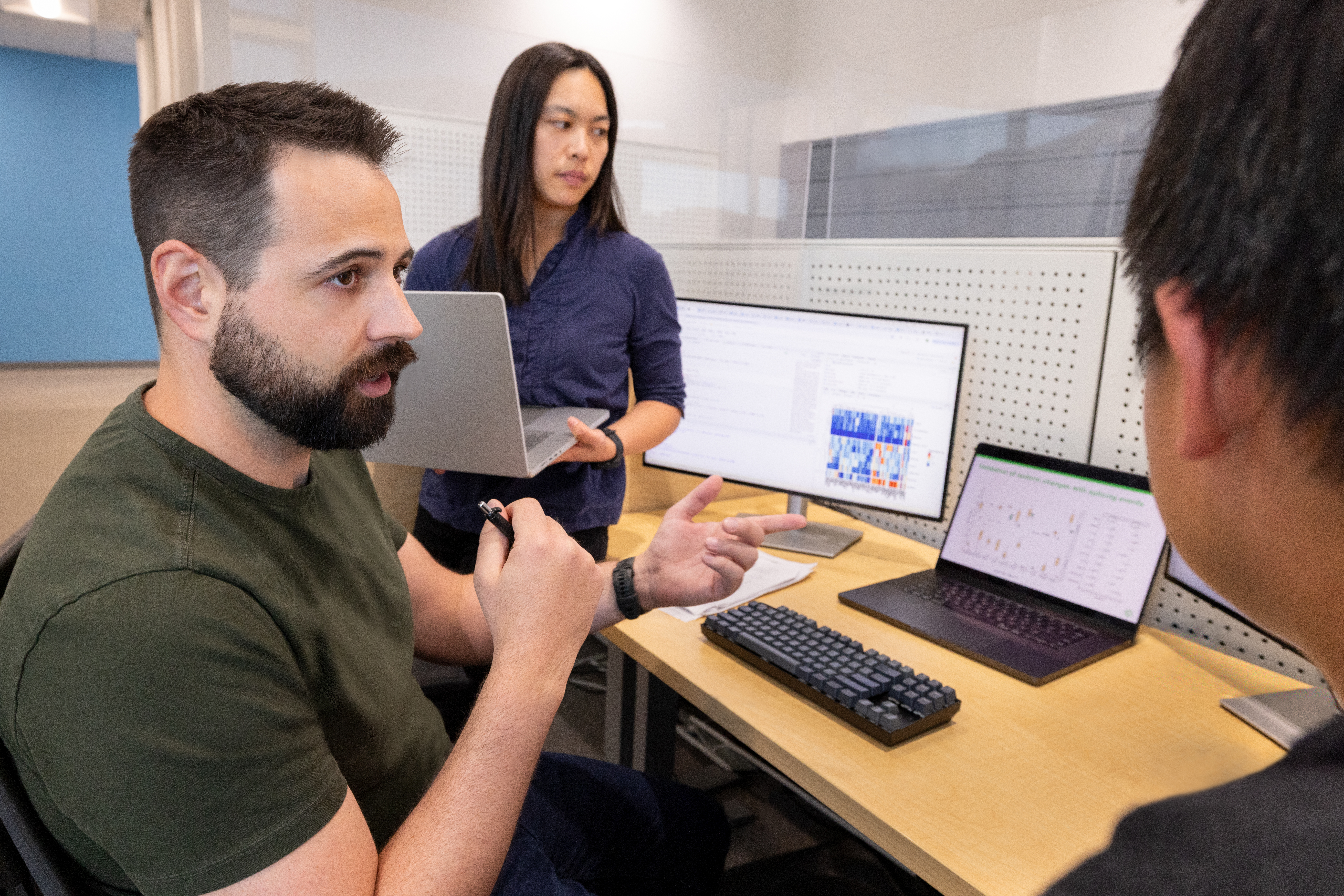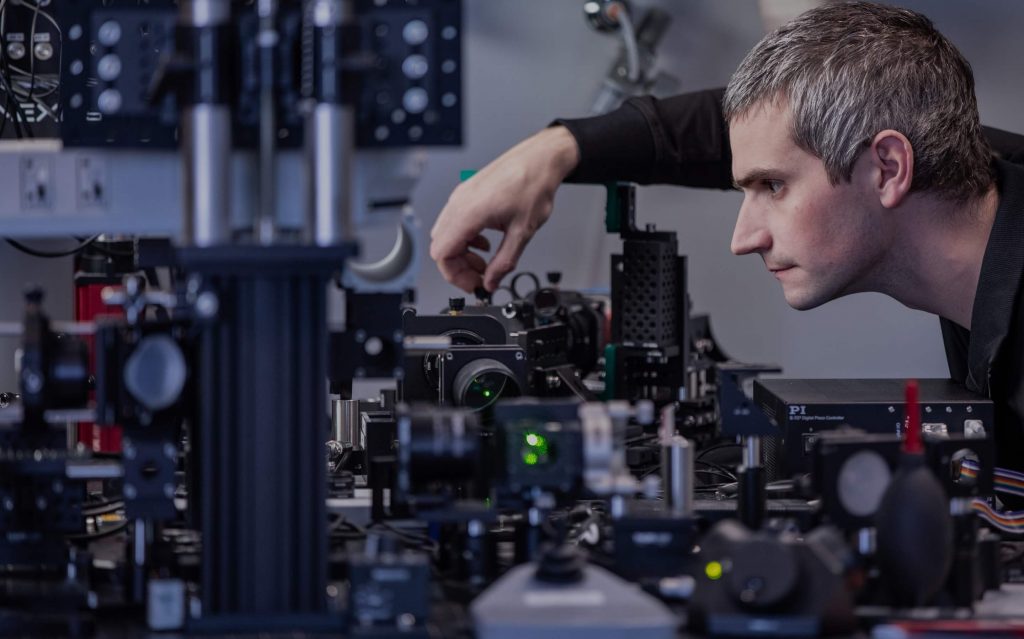Approach
Since our founding, Calico’s approach to understanding the biology of aging and age-related diseases has remained the foundation of our efforts
Focusing on both basic research and the translation of our discoveries into new interventions that may help people live healthier, and longer lives
Working at the convergence of biology and technology, coupled with a long-term perspective and funding
Collaborating with external organizations, including other biopharmaceutical companies and academic institutions, to combine our efforts
Taking a long-term approach, understanding that breakthroughs are made possible through persistent efforts over time
Employing an interdisciplinary approach, harnessing advanced technologies and computing, to accelerate discoveries. Inventing new methods when existing technology and approaches do not meet our needs
Calico Stories
The Human Genome Project laid the foundation for a deep understanding of our genetic code, but it also left scientists with an overwhelming question: what does all this code do? A…

Basic research
We hire innovative scientists with a broad range of skills and experiences and encourage them to collaborate freely
Our Research group features Principal Investigator-led labs working to understand the biological pathways of aging and disease — efforts that are accelerated by advanced computing and technology that are at or beyond the state-of-the art.
-
Small labs, big collaboration
Our research efforts are designed to fuel intellectual freedom and creativity. Ours is a bottom-up approach. Labs at Calico are small and we encourage collaboration and interdisciplinary research at every turn.
-
Biology that matters
Scientists in our basic research labs are working to understand how experimental organisms age by observing the aging process at the levels of the whole organism, organs and tissues and individual cells. Through these research efforts, Calico scientists work to understand the biological underpinnings of aging by studying organisms such as yeast, C. elegans (worms), mice, and human cells and tissues. And our researchers, especially our computational biologists, are digging deep into large available human genetic data sets to inform both our research and our translational efforts.

Technology
Our research is powered by technology
We like to think of it as beyond state-of-the-art. At Calico, our technology labs work hand-in-hand with scientists throughout the company, advancing hypotheses on how specific technologies and know-how can help answer a research question or advance a clinical study at the depth required to progress the field.
If an existing technology does not help us answer a research question, then we’ll invent something new. Or, we may invent a new technique that enables researchers to take completely different approaches. Scientists and engineers in our technology labs are not bound by the questions of others. They come up with their own approaches enabling scientists to ask big questions, and are encouraged to build and harness new technologies and tools that can support the entire scientific community.
See how two scientists in our microscopy lab invented a new microscope.

Computing
Answering the big questions requires iterating between theory and experiment
-
Biology has become an informatics field
The amount of scientific data being generated by new high-throughput technologies far outpaces the ability to interpret it. Our Computing team works closely with our R&D colleagues to understand which data that we create may generate the most impactful hypotheses. We then design experiments to test these hypotheses, and interpret, learn and generate more hypotheses that help us understand aging better.
We use advanced computing to answer meaningful biological questions and advance clinical research. We aim to accelerate scientific discovery by collaborating closely with our colleagues and collaborators to build infrastructure, develop software, advance technology and invent new methods and algorithms.
-
Freedom to explore, technology to lead the way
Our team of machine learning experts, software engineers and data scientists bring quantitative rigor to the study of aging and age-related disease. We’re interpreting large sets of genotypic and phenotypic data from model organisms and humans to enable new insights into how we age; we’re using machine learning and advanced computer vision to analyze images generated by our various research labs; and we’re using computing to measure genomic, metabolic and physiological traits to observe and better understand the changes that occur as an organism ages — just to name a few of our ongoing efforts.

Partnering with Calico
Why collaborate with Calico
We are different by design. Calico combines the focus and drive of a start-up with the resources and world class R&D capabilities of the leading biotechnology and pharmaceutical companies. Partnering with Calico, therefore, provides a different type of collaboration — a mindset focused on tackling big, complex scientific questions, scientists who enjoy the opportunity to explore new avenues of research, a culture that supports collaborative efforts, and a commitment to developing potential new interventions that may improve the quality of life during aging and benefit patients.
